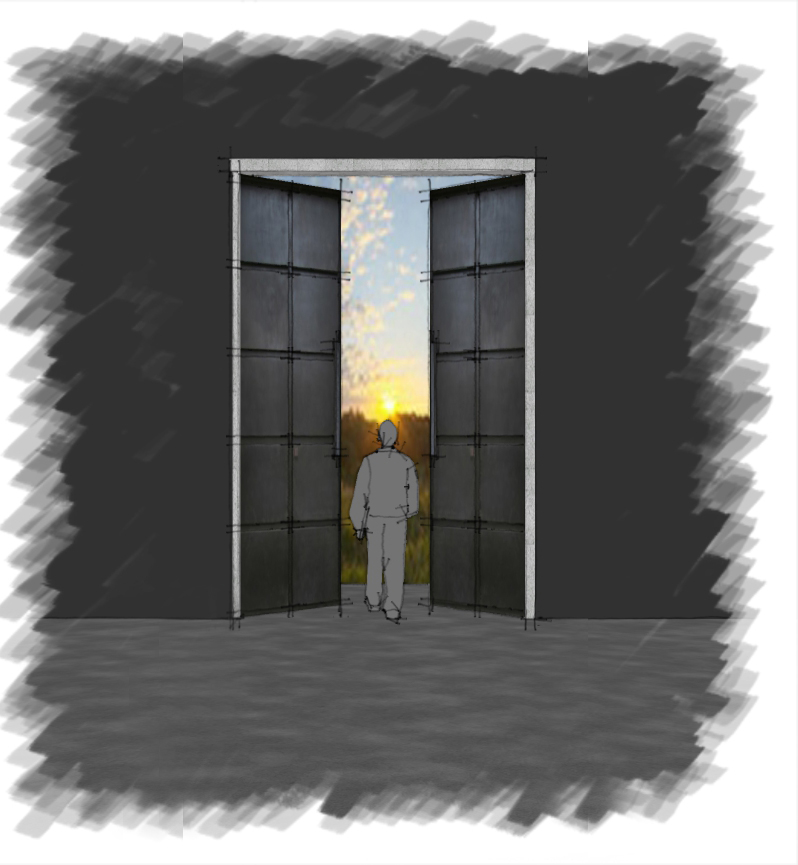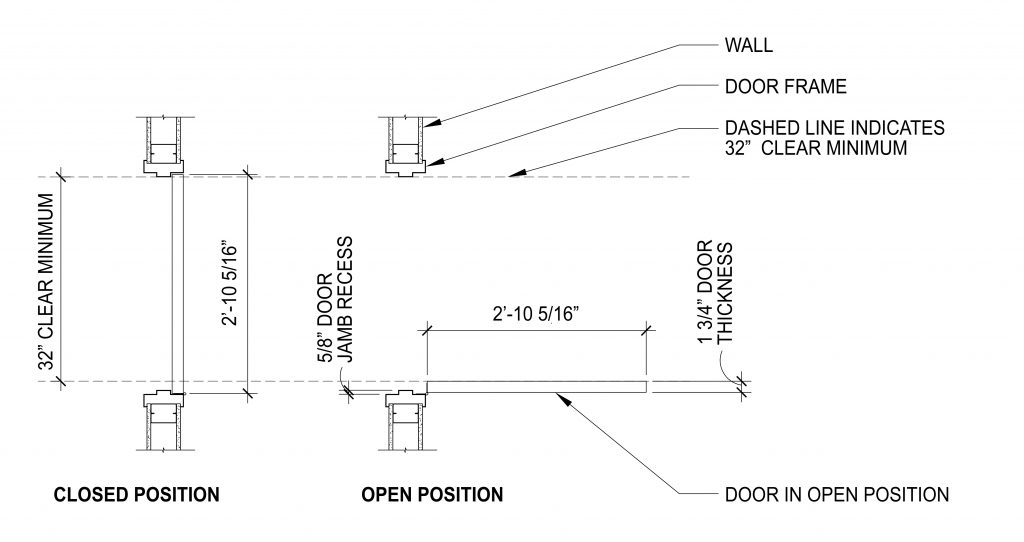Door size – Building Codes – Size Matters
As an Architect, I interact with clients, engineers and contractors who have acquired bits of information about Building Codes. Sometimes, those bits are misconceptions and regurgitated information. The building codes can be intimidating and have no beginning or end. To learn the code, the best way is jumping in feet first. Door size matters.
Upcoming Blog Posts
In the next series of blog posts, I will explore common simple and more complex Building Codes. Each City has adopted a code but most in Arizona use the IBC (International Building Code).
The issues to be addressed in the following Blog Posts are:
- Door swing direction. Which way should the door swing, out of a room or in?
- Number of exits within a room?
- Door Size. Who said “size doesn’t matter.”
- Exit corridor width. How wide or narrow can a hallway be?
- Clearances around a door? Door arrangement between two doors.
- Door fire ratings. Is your door fire rated?
- Exit Travel Distance.
- Do I need an Elevator?
- Should my door have panic hardware?
- Do I need a drinking Fountain?
- Minimum size of a single person toilet room?
- Small commercial space, is one bathroom enough?
The item in bold to be addressed in this post. As an Arizona Architect, most City’s jurisdictions work with the IBC (International Building Code). The code analysis is based upon the IBC.
Door Size
Doors are a means of egress within a building. The size of door is to allow for safe passage of occupants within the building and to allow for exit in case of emergency. The size allows for egress of able body and occupants using wheelchairs. Door Size is determined by minimum size requirements and occupancy loads. As you explore the code, you see a trend that occupancy load effects many elements of the building.
The code indicates that a door provide a minimum of 32″ clear when open 90 Degrees. If you look at the specific detail below, depending on door thickness, the door hinges used and the clearances you take into account around the door itself, a door itself has to be minimum ~2′-11″ wide. For ease of construction, doors are typically 3′-0″ or 36″ wide to take into account variables in the components. There are however a few exceptions to the code. Those pertain mainly to residential projects, storage closets and revolving doors. Projections into the clear width such as door handles, stops, closers, etc. are allowed at 34″ above finish floor as long as they don’t exceed 4″ into the clear space.
If size matters, who said it’s too big? Per IBC (International Building code), maximum width of a swinging door leaf shall be 48″.
Door height minimum is 80″ or 6′-8″. I have yet to find in the code a maximum height of a door. A governing factor may be how easy / difficult it is to open the door itself. There are requirements in the code for the maximum force required to open a door. So I suppose, a door too big would exceed those. If you find a section, let me know.
Means of Egress
Another factor to door width relates to occupancy quantities. Means of Egress – “The continuous and unobstructed path of egress travel from occupied space to a public way”. The minimum size of the door or doors can also be affected by this requirement. For example, if an occupant load exceeds 160, the door width of 36″ will not suffice as shown in equation below.
Per IBC 1005.1, means of egress width is determined by the number of occupants x 0.2 inches.
160 occupants x 0.2 inches = 32 inches.
Therefore if the occupant load through a door is greater than 160 occupants, a single 36″ wide door would not suffice. Possibly a 48″ wide door would work, but in most scenarious, (2) 36″ doors or multiple exits doorways would handle this scenario. Note: stairwells have a multiplier of 0.3 inches.
Additional Requirements
Within Assembly occupancies, means of egress and exits have different requirements as shown in IBC section 1028. If your interested in further analysis, I will cover that in another blog post.
Summary
Door size does matter. The code clearly indicates the minimum and maximum size of doors. Occupancy quantities has some affect but as depicted, on larger scale projects. On many projects, a typical 36″ door will suffice in an exit condition unless you exceed specific thresholds.
When learning building codes, once you begin digging into the code, it begins to make sense. However when in doubt, rely on an Architect to explore the code and assist you.


